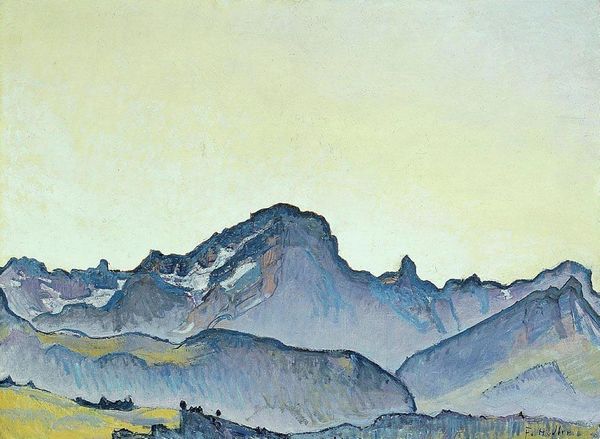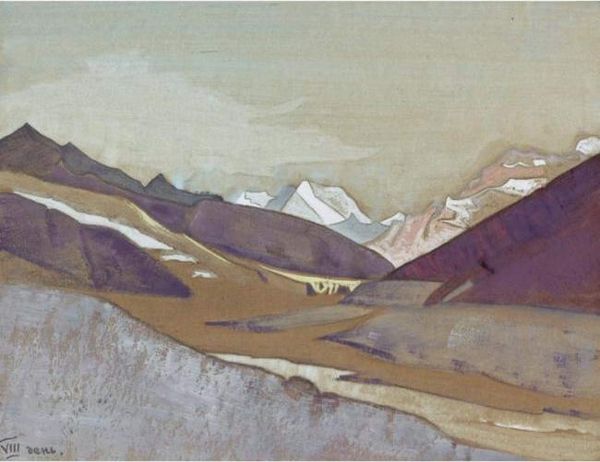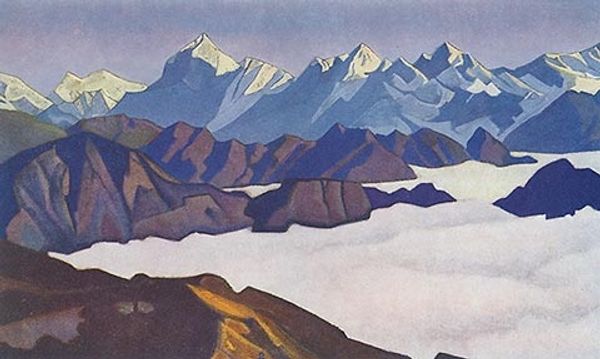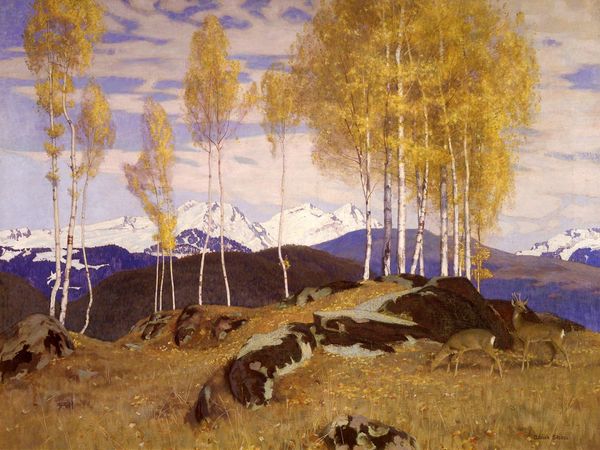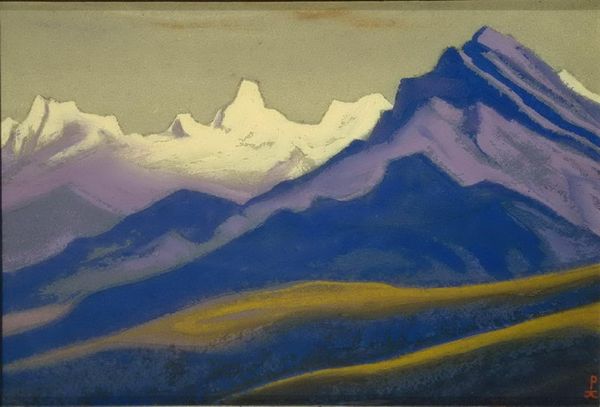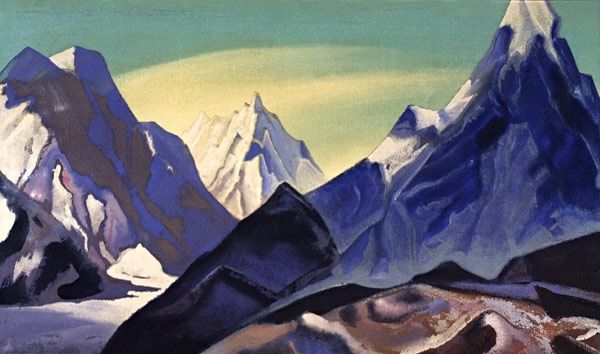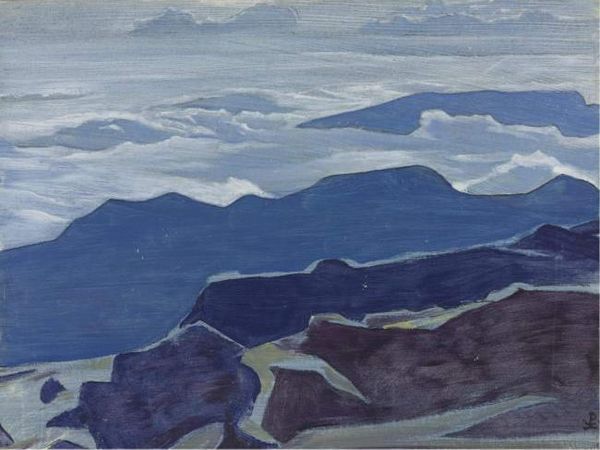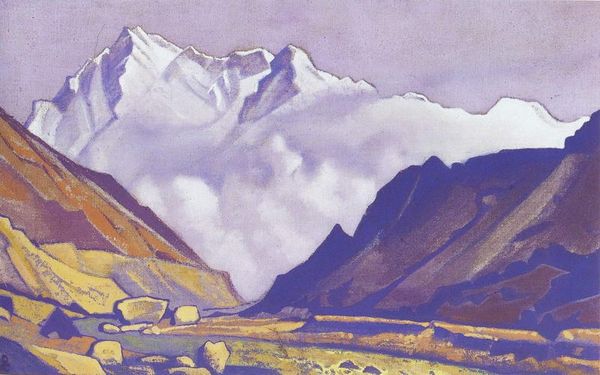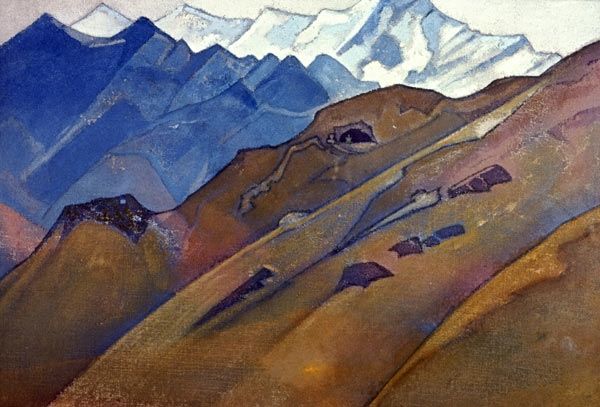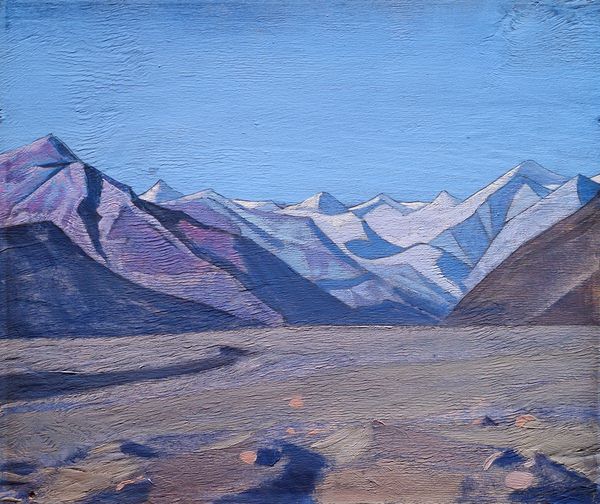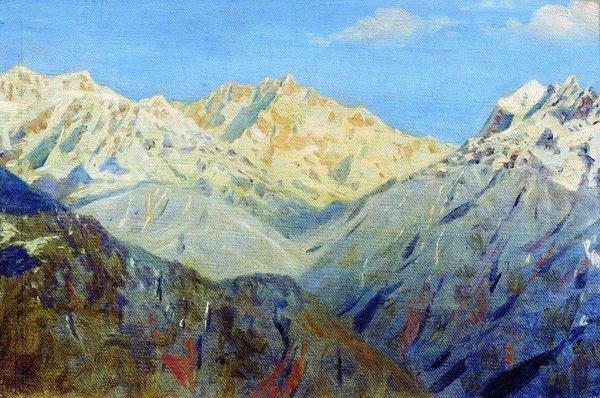
Copyright: Public domain US
Curator: Looking at this canvas, one is immediately struck by the imposing snow-covered mountain and vibrant green pasture below. Editor: Yes, it evokes a sense of peace and the scale of nature’s grandeur, somehow both inviting and distant. I wonder about the title: This oil painting from 1923 is called Aragats in Clouds by Martiros Sarian. It has a definite symbolic presence with a palpable mood, doesn’t it? Curator: For me, it's fascinating to see how Sarian layered the paint to achieve such texture. Look at the way the oil pigments build depth, specifically within the depiction of the mountain. Given his cultural context, this wasn't simply about capturing a scene, but conveying a specific relationship with land, community and belonging through the very materiality of pigment and labor. Editor: I am particularly interested in this winding pathway, seemingly filled with figures, leading into the landscape, that acts as an archetypal symbol for our life journey or quest, beckoning the viewer. It is in a style that incorporates symbolism and post-impressionist painting techniques, like flattened perspective and heightened colour, to communicate specific meaning to the Armenian nation and a shared experience. Curator: And those colours were far from incidental; there is clear intent when viewing Sarian’s palette choices, and the conditions with which those would have been obtained, circulated, and used, as a lens into trade economies and material realities in 1920s Armenia. How these raw pigments were sourced and transformed tells us much about resource availability and artistic labor at that specific moment in time. Editor: Indeed. Sarian, who was an Armenian artist, presents Mount Aragats not only as a physical entity, but almost as an icon – the mountain has deep roots in the Armenian identity; Aragats itself looms large not only in the landscape, but also within Armenia's collective psyche and shared history. This depiction creates a connection to home. Curator: Reflecting on it all, what strikes me most is the synthesis. Here, the land becomes a cultural record, where materiality speaks not only of making and manufacturing, but memory too, within the human experience. Editor: I concur, this is why a painting of this landscape is much more than merely aesthetic; it becomes a potent symbol of national identity and spiritual continuity, embedded in our visual language across generations.
Comments
No comments
Be the first to comment and join the conversation on the ultimate creative platform.
